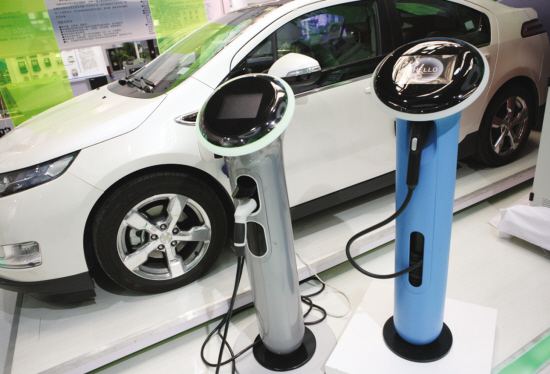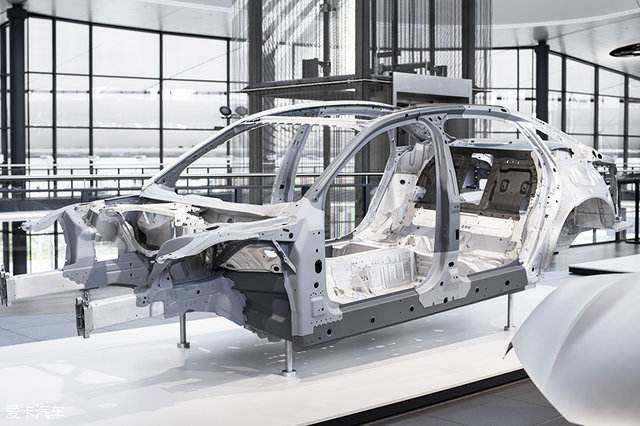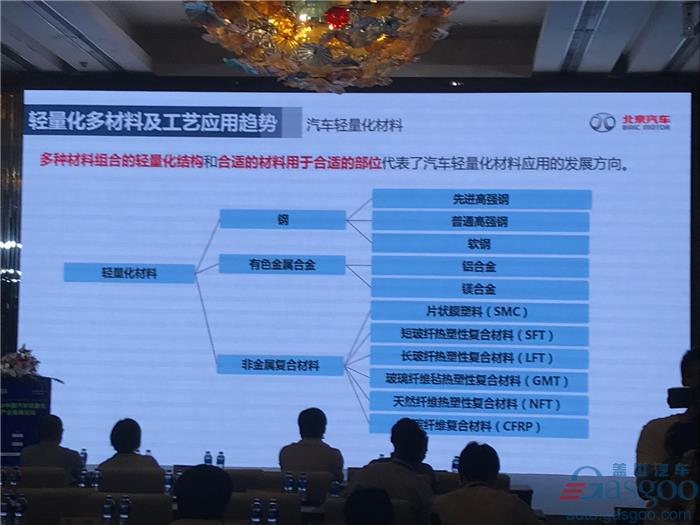In recent years, the development of new energy vehicles has entered a rapid development channel. Especially in the trend of the overall slowdown in sales of the Chinese automobile market last year, the sales volume of new energy vehicles is still showing a sharp increase. The sales of new energy vehicles reached 800,000 in the whole year. Car. According to the data of China Automobile Association, the sales volume of new energy vehicles in China in the first half of this year has reached 412,000, an increase of 112%. At this growth rate, it is expected that the cumulative sales volume for the whole year will reach the first million units.

According to industry predictions, the number of traditional fuel vehicles will reach a peak by 2025. After that, the total volume will gradually decline, and new energy vehicles will gradually increase in volume. By 2030, new energy vehicles will be expected to exceed traditional vehicles.
In fact, under the current global energy crisis and environmental protection pressure, with the transformation of traditional fuel into electric drive, the car power revolution has intensified, and the car material revolution, the automotive material revolution, is also a wave of momentum, and the automotive power revolution. Walk side by side. Different from traditional fuel vehicles, new energy vehicles use batteries as power to drive the car. Due to the weight of the power battery and the cruising range of the power battery, under the strict energy conservation and consumption reduction regulations, the body weight becomes a new energy vehicle. The first consideration is the issue.
Recently, at the 2018 China Automotive Lightweight Industry Summit Forum hosted by Gasgoo, many industry leaders have published the latest views on the application of new energy vehicle materials. Combining these points, Gasgoo has been in the fire of new energy vehicles. What is the impact on the future steel? In the article, the focus is on the analysis of the types and demand of new energy vehicles in the future. Today we will combine other materials to see the latest views and trends of new energy vehicle materials.
Future automotive materials trends: non-metallic proportions increase each material equally divided
At present, from the perspective of body materials, steel accounts for 65%-70% of the weight of the whole vehicle, non-ferrous metals account for 10%-15%, and non-metallic materials occupy 20%. At the China Automotive Lightweight Industry Summit Forum, BAIC Cao Du, deputy director and chief engineer of the Institute of Stock Research, pointed out: "In the next 10-15 years, all kinds of materials and dosages of automobiles will be equally divided, and ordinary steel, high-strength steel, polymer, aluminum alloy and magnesium alloy will reach 20% of applications, this is the revolution in the automotive materials industry."
It is understood that this data forecast comes from a report on the lightweight inventory of automobiles commissioned by the German government, which shows that the application of aluminum alloys and composite materials will increase significantly in 2025. By 2035, various materials will be have equal shares.
In fact, aluminum alloys and magnesium alloys are currently the best choice for lightweight vehicles. As the most common lightweight material for automobiles, it is predicted that the amount of aluminum alloy used in automobiles can reach 540kg, which can reduce the weight of automobiles by 40%. It is widely used in structural parts and stamping parts such as engines and body parts, among which Audi and other car companies have seen The all-aluminum body is put into reality.

For new energy vehicles, taking power battery trays as an example, steel battery power battery trays have been used in the past, and nowadays mostly aluminum alloy profiles. The density of the aluminum alloy profile is 2.7g/cm3, and the aluminum alloy material has obvious advantages in terms of tightening and welding. The magnesium alloy has a density of 1.8 g/cm3 and the carbon fiber is 1.5 g/cm3, and the battery tray made of these materials can achieve a substantial weight reduction.
“Magnesium or magnesium alloys will also be used in some structural parts that are not visible, such as steering supports, seat frames, etc.; they will be used in high-end vehicles in terms of engine covers, transmission casings, and body structures. The body will also increase the application of carbon fiber materials, which will first be applied to the body, covering reinforcements and rigid structural parts (such as truss beams)," Cao Du said.
Although there are data showing that in 2025, the proportion of steel used in automobiles will still reach more than 50%, but according to industry predictions, non-metals will increase in automotive materials in the future. FAW Gaogong Tian Hongfu also pointed out at the China Automotive Lightweight Industry Summit Forum that in addition to non-ferrous metals to replace some steel, the remaining part is the focus of non-metal. On the one hand, however, there are a lot of good lightweight technologies that are not fast and not popular, and most of them are due to cost. Even the best technology will affect the whole product if the cost is too high.
At present, there are many types of materials for power battery casings of new energy vehicles, including steel, iron, aluminum alloy and other non-metallic materials such as plastic and carbon fiber. Tian Hongfu pointed out that this piece is not fully mature now, but in the future, this part and charging piles and sockets are important parts of new energy vehicles, and the amount will be very large. Non-metallic materials have very good application advantages in this field. .
In addition to batteries, non-metallic materials are also widely used in motors. For example, polyphenylene sulfide has high strength, high temperature resistance, high flame retardancy and corrosion resistance, and can replace some metals to manufacture key components of new energy vehicles. At the same time, in the field of intelligent network connection, it can also be used for sensors, controllers, actuators, including camera heads, radars, etc. With the development of the new automobile in the future, the extension of the application field will also put forward higher requirements for non-metallic materials.
Lightweight landing mode: only for component weight loss is too shallow
How to ensure the strength of the car body while achieving lightweight, in order to meet the stringent vehicle crash test and safety requirements, has become the top priority of the OEM. Usually, the OEM engineers optimize the configuration from three aspects: lightweight materials, vehicle structure design and manufacturing process to achieve safe and lightweight vehicles. In this regard, Cao Du pointed out that "automobile lightweighting is now only at the level of low weight reduction of parts and components, which is wrong and too superficial."
Cao Du gave a clear definition of car lightweighting. He pointed out that lightweighting is to use the lightest materials in the most suitable place with the least cost. He said that for the technical personnel who are doing the target design, the specific content of the lightweight can be clearly defined by this definition, which usually includes lightweight materials, structural optimization, and lightweight technology. Most people pay attention to lightweight. this point.

But in fact, it is not enough to follow the definition of lightweight. “The modular design is also a lightweight one, which is in line with the definition of lightweight. There are also lightweight design of the assembly, such as laser tailor welding, which gathers different density steels for lightweight design, which is very good.†Cao Du pointed out that in fact the worst thing to do now is to reduce the performance goals. Taking the chassis as an example, he pointed out that the self-owned brand is actually still in a reverse and semi-reverse level. "Who dares to say that the weight reduction of 150 kilograms can change the stringer of the chassis at will, there is no change at present. There is no problem in changing the body and the interior and exterior. There is no such level for the safety of the chassis. The reason is because we The reverse of the performance goals has constrained the level of vehicle lightweighting."
Therefore, from a comprehensive perspective, the development and weight reduction of the entire vehicle is definitely not a simple component weight reduction, but the development of the overall positive design. The weight reduction of the whole vehicle is a positive design of the whole body. It is the weight reduction of the whole system rather than the weight reduction of a certain component. This is the key to the problem.
For the weight reduction of the whole vehicle, it is not a simple part weight loss statement. Cao Du made further explanations. “What are the advantages brought by the weight reduction of the whole vehicle? After we achieved weight reduction, the overall fuel consumption has decreased by 1.2L. It is hard to imagine that the fuel consumption of 130 kilograms of weight loss will drop by 0.3L and 0.4L at most. How can it be reduced to 1.2L? In fact, after the weight loss, the engine displacement is reduced, and the better optimized 1.5DGI is used to change the engine displacement. After that, the engine vehicle power system was re-matched, and the matching was reduced by 0.4L, so that together, the vehicle could achieve a combined effect of reducing fuel consumption by 1.2L."
In fact, the lightweight technology route currently formulated in China is still stagnant at the level of lightweight technology routes for components, and there is no complete lightweight technology route to talk about the lightweight of the entire vehicle. of. Cao Du is worried about this. "I hope that the relevant departments of our government can make some improvements in this regard."
Summary of the world:
With the introduction of strict environmental protection and fuel consumption regulations and policies, lightweight vehicles have become the only way to achieve energy conservation and consumption reduction. Under the impetus of new energy and light weight, various materials are constantly being introduced, and the replacement of traditional metals with high quality and light non-metal will also become a major trend in the future. As Cao Du said, how to use the lightest materials at the most suitable place with the least cost, avoiding the weight loss of the whole vehicle into the misunderstanding of the simple parts and weight reduction, guiding into the overall forward design and development track, and introducing corresponding The lightweight technology route helps the host factory to cope with the challenge, which should be paid attention to by the relevant departments. It is also the subject and effort of the OEM.
Pet Mattress,Pet Dog Mattress,Pet Bed Mattress,Round Pet Bed Removable
Dalian CS Logistics Technology Co., Ltd , https://www.dlcsems.com
